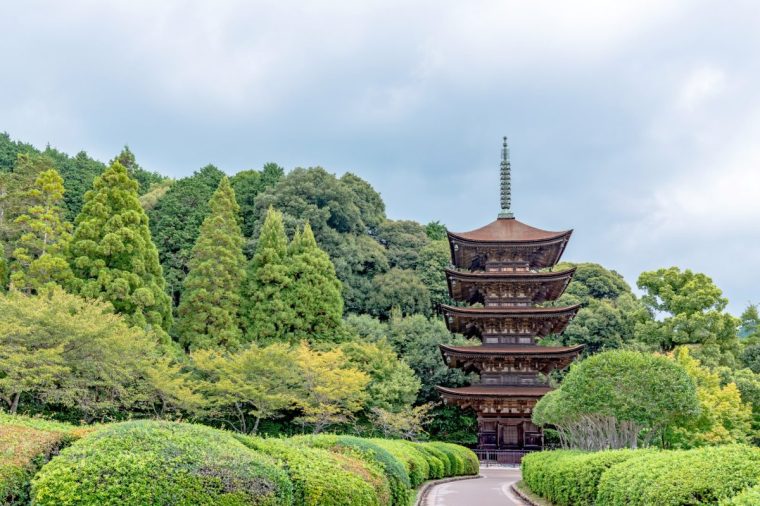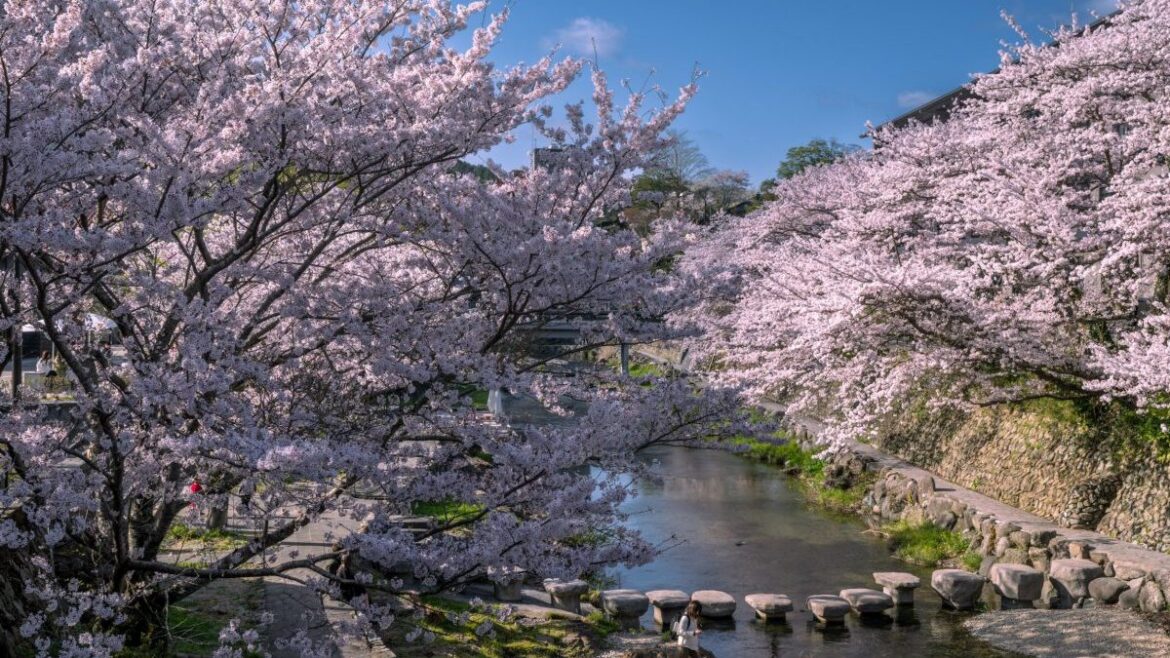Many first-time visitors head to the former capital, but try peaceful Yamaguchi for seasonal cherry blossom, temples and tea ceremonies
Cosy in a reclining seat, watching the white-washed, black roofed houses of hillside villages whizz by at 180 miles per hour, I smile broadly. Bullet trains, shinkansen, never fail to amaze me, even after a decade of visiting Japan. I’m on the Nozomi service, which starts in Tokyo and speeds south-west through Kyoto, Osaka, Hiroshima, and all the way down to Fukuoka on Kyushu island.
My destination is Yamaguchi prefecture, in the south-west of the main island, Honshu. Its capital is dubbed the “Kyoto of the West” (Kyoto is in the north-east of Honshu), so I’m expecting it will have similar architecture and traditional culture, without Kyoto’s crowds.
Parts of Japan are facing an overtourism crisis. The boom in popularity has been helped by the weak yen. In 2024, the country had a record-breaking 36.87 million international visitors – a 47 per cent increase from the previous year.
It is certainly an affordable time to visit. The pound is up 52 per cent against the yen compared to March 2020. Data from comparison website Numbeo shows that restaurant prices in Yamaguchi are 15 per cent lower than in Kyoto.
Japan’s “big three” cities – Tokyo, Osaka and Kyoto – receive most of the tourist traffic. “Most first-time travellers to Japan go to Kyoto, which is understandable as it was the imperial capital for over 1,000 years,” says James Mundy of B-Corp travel agency Inside Japan. “Eighty-two per cent of our customers in 2024 included a stay in Kyoto, but our repeat customers tend to explore lesser-known parts of the country.”
While it is Yamaguchi city that’s compared with Kyoto’s capital, there are similar influences in the wider prefecture. I’ll also be calling at Hagi, for instance, which, like several cities in Yamaguchi, was built in the Kyoto style in the 17th century by the Mori family (a clan of the aristocratic samurai warrior class) after they lost control of Japan and its capital.
 Motonosumi Inari shrine in Yamaguchi prefecture (Photo: Sean Pavone/Getty)
Motonosumi Inari shrine in Yamaguchi prefecture (Photo: Sean Pavone/Getty)
I’m travelling with Inside Japan, which has provided my itinerary, my train tickets, a pocket Wi-Fi device and a 24/7 hotline number if I need assistance. My first stop is the spa town of Yuda Onsen. Here, I wander past hot-spring foot baths, matcha tea houses and second-hand book shops. The town is quiet, and I don’t encounter any other Westerners.
Of the tourist arrivals to Japan last year, fewer than 250,000 visited Yamaguchi. And just four per cent of international tourists here were from Europe.
After Yuda Onsen, I move onto Yamaguchi city. Here, Setsuko Tamura, my guide, leads me along the cherry-blossom lined, riverside Ichinosaka Path; we don’t meet another person. Otherwise, it’s reminiscent of Kyoto’s busy Philosopher’s Walk.
I ask Setsuko if the comparisons between Yamaguchi city and Kyoto hold weight. She says there are similarities to Kyoto, from the street names to the grid system. She also tells me about the Ouchi clan. In 1442 they built Yamaguchi’s Buddhist Rurikoji Temple and its five-storey pagoda in the Kyoto style, as the lord’s wife hailed from the then capital.
 The Rurikoji temple is from the 16th century (Photo: Getty/iStock Editorial/Taira Masao)
The Rurikoji temple is from the 16th century (Photo: Getty/iStock Editorial/Taira Masao)
Next, I seek out Hagi’s similarities to Kyoto. This city on Yamaguchi’s north coast is linked to the rest of the prefecture by train and at its heart is a well preserved old town, established in 1600. It’s packed with samurai-era residences, which give a snapshot of life 400 years ago. At the Kikuya Family Residence, for instance, visitors enter through a small square door that’s impossible to pass if you’re armed with two samurai swords.
Hagi is the home of Hagiyaki, ceramics handmade according to wabi-sabi. This Japanese concept involves accepting the transient nature of all things and finding joy in their imperfections.
My visit begins at Seiseian tea house where, as part of the ritual, I carefully rotate my Hagiyaki bowl of matcha. Takiko Morita, who’s 90, is my host – she’s been running the tea house for 50 years.
 The buildings of Hagi Town (Photo: Tadahisa Sakashita/Getty/iStockphoto)
The buildings of Hagi Town (Photo: Tadahisa Sakashita/Getty/iStockphoto)
My last stop, Nagato, is another coastal city. It’s just over an hour from Hagi on the local San’in line. Here, I climb the 123 steps that weave around a cliff face under the 123 bright red “Torii” gates of Motonosumi Inari shrine.
The bijou spa town of Nagato Yumoto is my home for the night. Upon arrival at its Kawarasoba Yanagiya restaurant I’m served a plate of Kawara soba, noodles cooked and served on a roof tile – as they were originally. It’s Yamaguchi soul food.
On the other side of the river is Onto, fed by a hot spring, where I spend an hour the next morning. Submerged in warm water, and totally relaxed, I’m reluctant to ever leave this quiet corner of Japan.
Getting there
Several airlines offer direct UK–Toyko flights.
Booking it
Lucie Grace was a guest of the Japan National Tourism Organisation, travelling with InsideJapan. InsideJapan can include a seven-day cultural adventure across Yamaguchi costing from £2130pp, including six nights’ accommodation, breakfast every day, all transport across the region, private guiding and a range of experiences. InsideJapan can tailor a cultural adventure to suit time frame, budget and interests. insidejapantours.com
More information
japan.travel/en/uk/
yamaguchi-city.jp/w/en/
visit-nagato.com/en


AloJapan.com